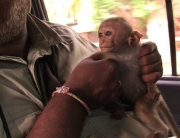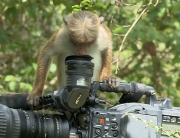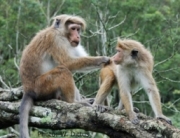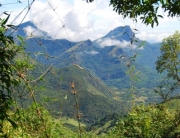The biogeography & ecology of Sri Lankan mammals point to conservation priorities
Ceylon Journal of Science 46 (Special Issue): 33-64. (2017) Research Article
Author: Dittus, Wolfgang PJ
Get the whole fascinating story free download
Abstract: All mammals originated on the supercontinent of Pangaea in the Mesozoic era during the “Age of Reptiles.” However, the crown ancestors of contemporary mammals did not flourish until major environmental and biotic changes had occurred. An asteroid collided with earth at the end of the Cretaceous Period (the K-Pg boundary event) wiping out non-flying dinosaurs and primitive mammals. It was followed by large-scale volcanism, a spike in atmospheric oxygen and the proliferation of flowering plants. New niches became available for the ancestors of today’s mammals to fill. Evidence suggesting whether the ancestors of the Sri Lankan and Indian mammals originated on the tectonically marooned Indian plate before crashing into Asia or on the Laurasian supercontinent is inconclusive. Modern Sri Lankan mammals show their greatest affinity with those of southern India, and were more diverse in the Pleistocene when rhinoceros, hippopotamus, wild dogs, gaur and lions enriched the island’s landscapes. Native Sri Lankan land-based mammals are diversified into about 108 unique taxa (among 91 species and 53 genera), differentiated as phenotypic adaptations to sharply contrasting environments among seven major phyto-climatic zones. Endemic subspecies are distributed fairly equally across different phyto-climatic zones (n=24 to 29), except in the highlands where they are fewer (n=14) having evolved rapidly to species and genera among the insectivores and rodents whose reproductive rates are high. Conversely, greater numbers of endemic species (n=13) and genera (n=3) occur in the highlands than in the other zones (2-6 endemic species, no endemic genera). The prevalence of endemism is inversely related to body size or vagility. This suggests a greater probability of genetic exchange among distant populations of large bodied mobile mammals within Sri Lanka, as well as with Indian fauna during periods of land bridges in the Pleistocene. Most (8 of 13) endangered and critically endangered endemic mammals occur in the wet montane regions that offer the least Protected Areas (PAs). More than 85% of PAs occur in the extensive dry zone about half of which is not suited for water dependent mammals whose distributions are restricted to alluvial forests (less than 1% of PAs). Historically, the national cost of conservation has been low and therefore politically palatable. Current conservation urgently requires a major change in management policy combined with realistic investment to prevent extinctions of many endemic mammals and other unique Sri Lankan biota.





